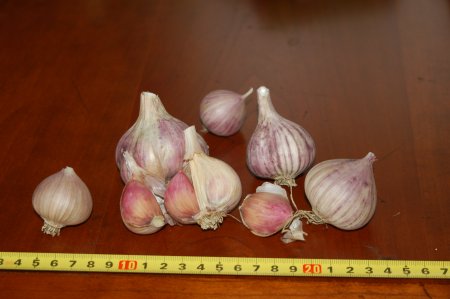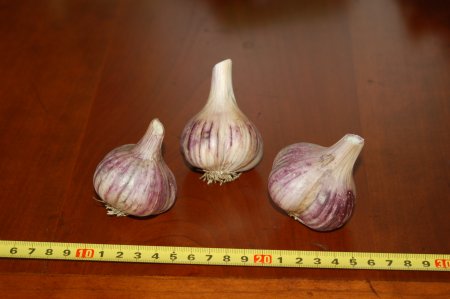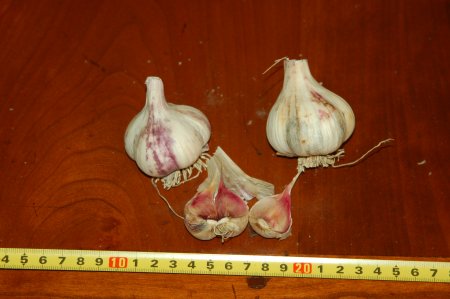I have some extra garlic planting stock if anyone is interested.
I’m sorry, I can’t send it to the US. I live in Holland, and the US just doesn’t allow the import of garlic from Holland without a ton of red tape, if at all. Mostly this offer is to people in northern Europe, because the climate will be similar to mine and we will have the best chance for success.
In practical terms, I can send it anywhere within the European Union without any problems. If you live outside of the EU and the US, and are interested, we would have to look into it and see if it’s possible. Importing garlic into Holland does not seem to be a problem, and if we look into it we may find the same thing true with many other countries.
I had garlic rust, a fungal disease. As far as I know this is not carried in the garlic itself, is only present in the ground and air, but understand planting my garlic in your garden is not without risk of infection. In fact this is a very common plant disease by now, and is probably in your area anyway.
Plant viruses are also very common in garlic, and are probably present in my bulbs. Normally this is something hard to avoid anyway, and viruses are not normally considered very serious. Some viruses are even considered beneficial. I have no reason to believe I have an unusual or serious problem with viruses.
I am not aware of any other disease infection risks associated with my garlic. Keep in mind I grew about 70 different kinds this year, collected from all corners of the globe, and anything is possible.
Okay, all warning and disclaimers aside, if you are interested please send me an email and I will send you a list of the varieties I still have. This offer is until the end of September 2007, but please contact me as soon as possible. Last year I made a similar offer, and I was able to send everyone who asked what they wanted. If a lot of people contact me with requests, I may have to limit quantities or stop accepting requests.
As far as payment, mostly I am expecting you to pay postage and packaging costs, perhaps slightly ’rounded up’. You need to pay in cash, and I can accept most common currencies but certainly Euros, UK Pounds and US Dollars. No coins, only notes. Please contact me, and I will give you an estimate of costs.
If you have already contacted me about getting some of my planting stock, there’s no need to send another email. I’m still working on sorting out the requests I already have.




